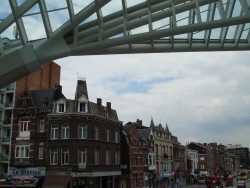Retrofitting public buildings: where public procurement and innovation have to shake hands
Governments and local authorities are keen to promote smart cities, which often involve integrating new technology such as ventilated façades, insulated envelops, automatic louvers and sophisticated data management platforms. However, it’s not always plain sailing when it comes to public buildings; lurking in the background is the spectre of public procurement rules and lengthy decision-making processes. The EU’s Energy Efficiency Directive states that “EU countries must make energy efficient renovations to at least 3% of buildings owned and occupied by central government.” The spirit of course applies to all echelons of government, right down to towns and the smallest of villages. So what are the specific challenges of retrofitting public buildings? The major issue is innovative technology. When a public entity issues a call for tenders, it is navigating largely unchartered waters. The technical specifications to enable suppliers – or bidders – to assess if they can supply and deliver have to be predicted. This can lead to unclear tenders, suppliers getting confused and their bids not complying fully with the expectations in the real world. Budgets too are often hard to predict when state-of-the-art solutions are involved, which can be tough as Catherine Pinet from Province de Liège, Belgium, found out when she and her team overran their budget in a European project called BRICKER. The initiative is aimed at retrofitting public-owned buildings in order to cut energy consumption by half in a cost-effective and technology-led drive. Under the project, an engineering college, owned by Province de Liège, is getting a green overhaul with new façades, insulation and a revamped heating system. As a result of the guesswork done at the procurement stage “we had to find other ways to fund some of the works and this can be particularly challenging in a public sector context”, comments Pinet. This highlights the need for close cooperation between subject matter experts, research centres and other partners at the very initial stages of putting a tender together. Innovation will still be “hot to handle” but a full consultation upfront may be the ticket to reducing financial uncertainty. Consequently, specifications could be drawn up more accurately despite the pioneering, and therefore untested, nature of the technologies to be implemented. Under collaborative projects, the various partners can provide their expertise in this respect, as long as a proper consultation process is planned from the start among them. This is one of the lessons that BRICKER has underlined and documented in the methodology it has been developing. As such, it offers a case-study based on real-world experience, adding to the body of knowledge to help the EU towards ““smart regulation, modernised public procurement, competition rules and standard setting.” Technology aside, a further difficulty is the difference in EC project rules and national procurement legislation. For instance, public tenders in Belgium don’t make the difference between sub-contracting and equipment costs whereas the EU projects do. The tribulations continue with a difference of terminology but this is also to do with the use of the English language. What does EPC mean? To a private company it may mean “Energy performance contract”, and to a public entity it could mean “Engineering procurement construction”, both being associated with renovation and the construction sector.
Keywords
retrofitting, buildings, smart cities, construction, energy efficiency, technology, public buildings
Countries
Belgium



